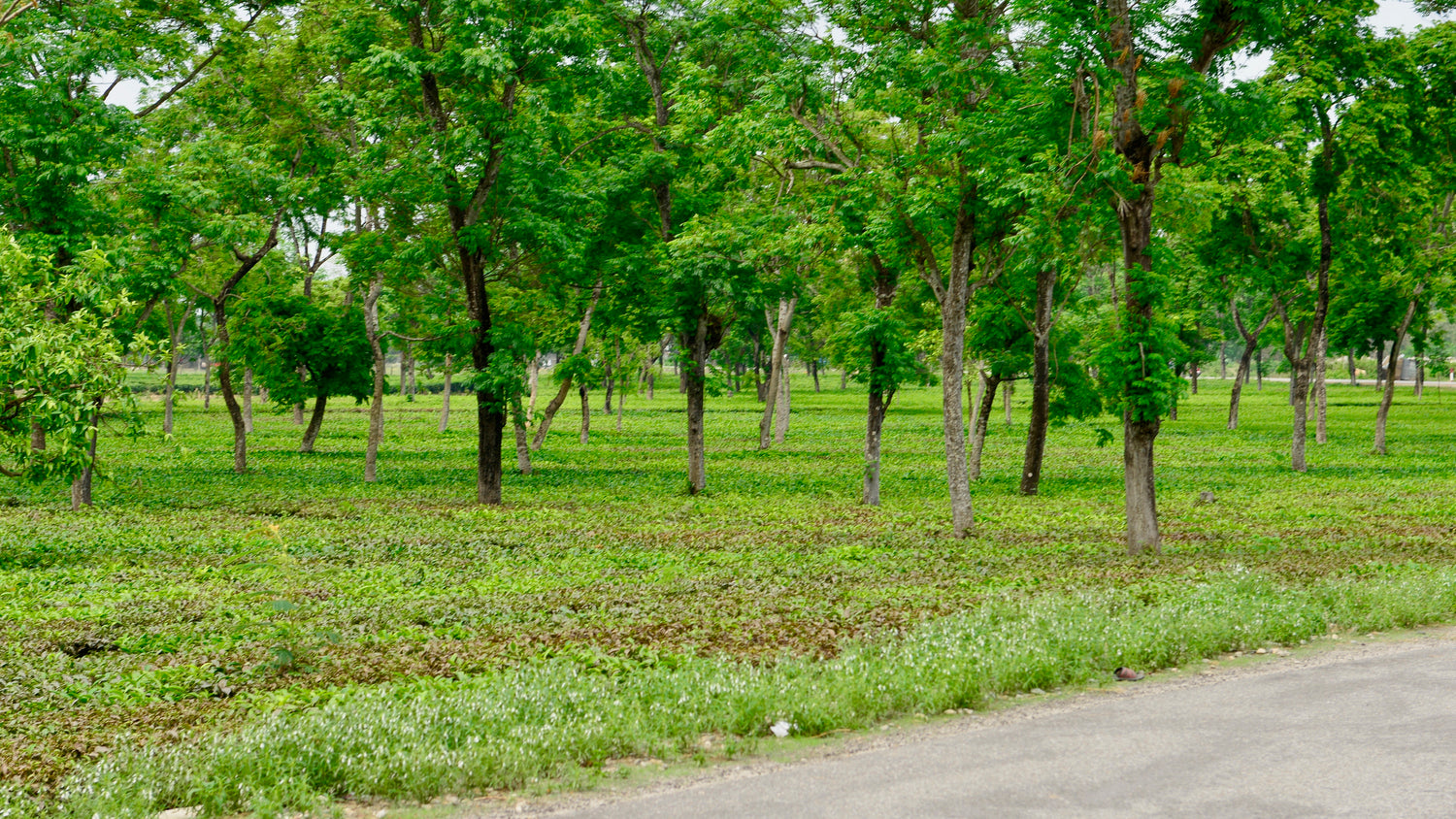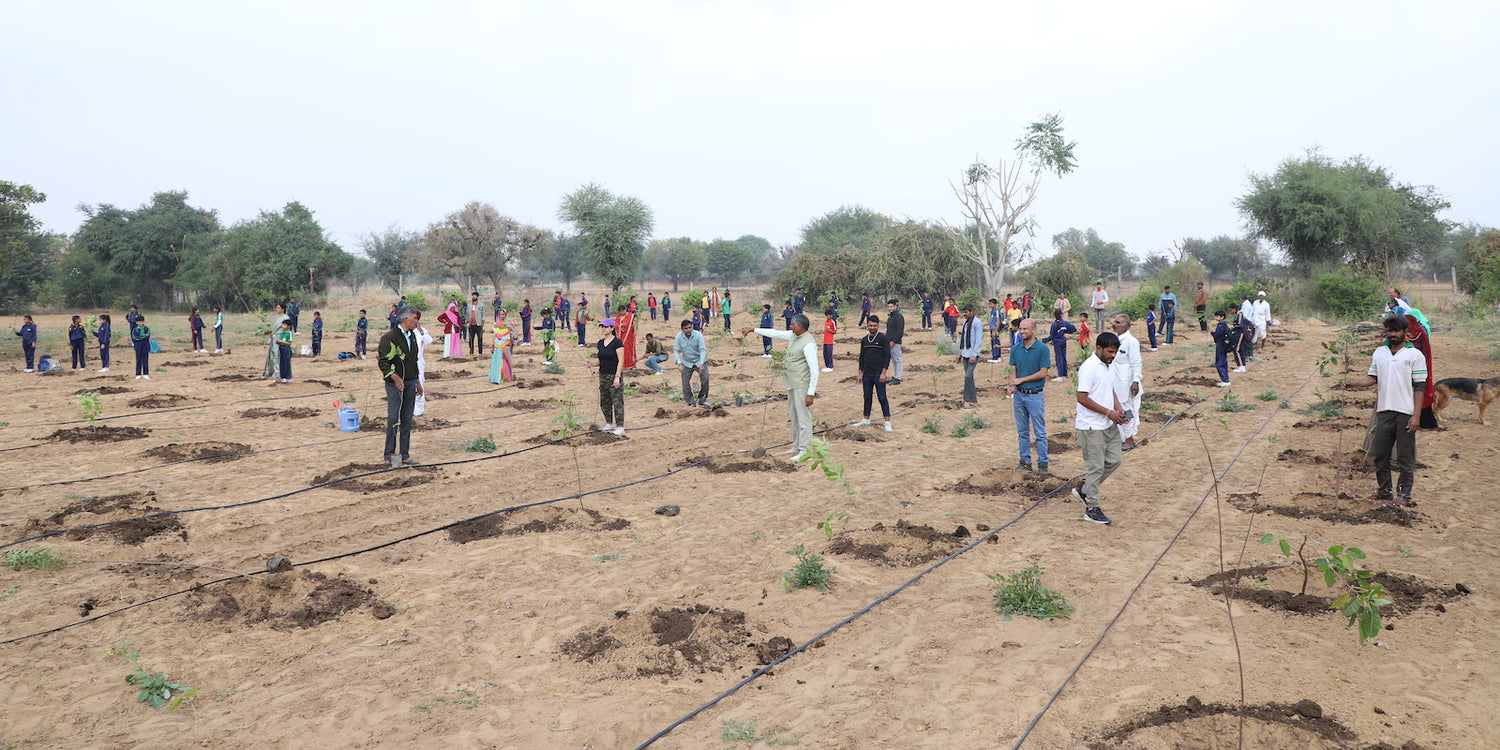Agroforestry in Madhya Pradesh: A Green Revolution in Central India
Madhya Pradesh, known as the "Heart of India," is a land of diverse landscapes, from lush forests to fertile plains. Its agriculture-dependent economy Read more
Connect with us
-
👥 Corporates
If you are looking for:
- 🌲 Tree Plantation Events
- 📊 CSR Projects
📧 corporate@growbilliontrees.com
📞 +91 9699723523
💬 +91 9325931304 WhatsApp (Only)
🕒 Mon - Sat | 10am - 7pm IST
-
🧩 Tree Plantation NGOs
If you are looking for:
- 💰 Financial Assistance
- 🤝 Operational Support
📧 support@growbilliontrees.com
📞 +91 9699723523
💬 +91 9325931304 WhatsApp (Only)
🕒 Mon - Sat | 10am - 7pm IST
-
🌼 Individuals
If you are looking for:
- 👥 Group Tree Plantation Drive
- 🌳 Bulk Tree Plantation
📞 +91 9699723523
💬 +91 9325931304 WhatsApp (Only)
🕒 Mon - Sat | 10am - 7pm IST
Trending
Trees for Corporates
Agroforestry in Madhya Pradesh: A Green Revolution in Central India
Madhya Pradesh, known as the "Heart of India," is a land of diverse landscapes, from lush forests to fertile plains.
Its agriculture-dependent economy and vast land resources make it an ideal region for agroforestry—a sustainable farming practice integrating trees, crops, and livestock.
Agroforestry in Madhya Pradesh is ushering in a green revolution, addressing environmental challenges, enhancing rural livelihoods, and supporting ecological balance.
Historical Context of Agroforestry in Madhya Pradesh
Agroforestry has been a part of traditional farming in Madhya Pradesh for centuries. Indigenous communities planted trees like Mahua (Madhuca longifolia) and Neem (Azadirachta indica) alongside crops for fodder, shade, and medicinal use.
These practices, rooted in the tribal ethos, exemplify the harmony between humans and nature. Today, agroforestry is being revived and modernized to meet the demands of sustainable agriculture and environmental conservation.
The Need for Agroforestry in Madhya Pradesh
1. Restoring Degraded Land
Madhya Pradesh has over 10 million hectares of degraded land. Agroforestry helps restore soil fertility, reduce erosion, and enhance water retention, turning barren lands into productive ecosystems.
2. Enhancing Farmer Incomes
With a significant portion of the population dependent on agriculture, agroforestry diversifies income sources through timber, fruits, and non-timber forest products like honey and resin.
3. Increasing Green Cover
Agroforestry contributes to India’s Green India Mission by increasing forest and tree cover, aiding biodiversity conservation in Madhya Pradesh.
4. Mitigating Climate Change
Trees in agroforestry systems act as carbon sinks. A hectare of agroforestry in Madhya Pradesh can sequester up to 30 tons of carbon dioxide annually, reducing the state’s carbon footprint.
5. Improving Food Security
By integrating trees with crops and livestock, agroforestry enhances agricultural productivity and resilience against climate variability.
Scientific Benefits of Agroforestry
- Soil Health Improvement: Trees like Neem and Arjuna enrich the soil with organic matter, boosting crop yields by 15–20%.
- Water Conservation: Agroforestry systems reduce water runoff and improve groundwater recharge, ensuring sustainable water availability.
- Biodiversity Hotspots: Agroforestry farms support a variety of species, creating habitats for birds, bees, and beneficial insects.
Common Agroforestry Practices in Madhya Pradesh
1. Taungya System
This system involves growing crops between rows of trees like Teak (Tectona grandis) or Eucalyptus, maximizing land productivity and providing both short- and long-term benefits.
2. Boundary Plantations
Trees like Bamboo and Sheesham (Dalbergia sissoo) are planted along field edges, serving as windbreaks and providing timber and fodder.
3. Agri-Horti-Silviculture
Combining fruit trees like Mango and Guava with timber species, this system diversifies income sources while enhancing ecological balance.
4. Silvo-Pastoral Systems
These integrate trees and grasses, ensuring fodder for livestock and stabilizing soil in erosion-prone areas.
Fun Facts About Agroforestry in Madhya Pradesh
- Mahua’s Magic: Mahua flowers are used for food, oil, and even local liquor, making it a cultural and economic boon in tribal areas.
- Teak’s Triumph: Madhya Pradesh is India’s largest producer of teak wood, a high-value timber species commonly integrated into agroforestry systems.
- Bamboo’s Versatility: Known as “green gold,” bamboo is increasingly popular in agroforestry for its fast growth and multiple uses.
Environmental Impact of Agroforestry in Madhya Pradesh
1. Combating Deforestation
Agroforestry reduces pressure on natural forests by meeting the demand for timber and firewood through farm-grown trees.
2. Reducing Soil Erosion
Trees stabilize the soil, reducing erosion by up to 50%, particularly in hilly and semi-arid areas of the state.
3. Enhancing Wildlife Corridors
Agroforestry creates habitats that connect fragmented forest areas, aiding the movement and conservation of wildlife like leopards and sloth bears.
4. Improving Air Quality
Agroforestry systems filter dust and pollutants, contributing to better air quality in urban and rural areas.
Challenges in Agroforestry Adoption
-
Lack of Awareness Many farmers are unaware of agroforestry’s long-term benefits, limiting its adoption.
-
Policy and Market Barriers Complex regulations around tree felling and limited market access for timber products discourage farmers from planting trees.
-
Initial Investment Agroforestry requires initial investment in saplings and irrigation, which can be challenging for small and marginal farmers.
-
Climate Uncertainty Irregular rainfall and extreme temperatures pose risks to agroforestry systems, especially in arid and semi-arid regions.
Grow Billion Trees: Revolutionizing Agroforestry in Madhya Pradesh
Grow Billion Trees is spearheading agroforestry initiatives in Madhya Pradesh, focusing on sustainability, economic growth, and environmental restoration.
Collaborations
- Partnering with the Madhya Pradesh Forest Department and NGOs to implement large-scale agroforestry projects.
- Collaborating with agricultural universities to develop region-specific agroforestry models.
Execution Strategies
- Tree Nurseries: Establishing nurseries to supply high-quality saplings of native and commercially valuable species like Teak and Bamboo.
- Farmer Training Programs: Organizing workshops and field demonstrations to educate farmers on agroforestry practices.
- Market Linkages: Connecting farmers to timber and non-timber product markets, ensuring fair prices and steady demand.
Awareness and Advocacy
- Running community outreach programs to highlight the benefits of agroforestry in combating climate change and improving livelihoods.
- Sharing success stories of farmers who have transformed their lands through agroforestry to inspire wider adoption.
Key Achievements by Grow Billion Trees
- Tree Plantation Drives: Over 10 million trees planted across Madhya Pradesh, significantly increasing green cover and restoring degraded lands.
- Farmer Empowerment: Enabled 50,000+ farmers to adopt agroforestry, increasing their incomes by up to 35%.
- Climate Mitigation: Agroforestry projects under Grow Billion Trees have sequestered over 1.5 million tons of carbon dioxide in the state.
Future Prospects
By 2030, agroforestry in Madhya Pradesh has the potential to:
- Increase the state’s tree cover by 20%, contributing to India’s green targets.
- Restore 1 million hectares of degraded land, ensuring sustainable agriculture and livelihoods.
- Provide additional income to over 100,000 farming households, enhancing economic stability in rural areas.
Conclusion
Agroforestry in Madhya Pradesh represents a transformative solution to the challenges of land degradation, climate change, and rural poverty.
By integrating trees with crops and livestock, this practice enhances ecological balance, boosts farmer incomes, and supports sustainable development.
Grow Billion Trees is at the forefront of this revolution, empowering farmers, restoring ecosystems, and ensuring a greener future for Central India. With collective efforts, agroforestry can truly become the cornerstone of Madhya Pradesh’s green revolution.
Teak Agroforestry in Madhya Pradesh
Teak trees, known for their high-value timber, are a farmer’s dream in Madhya Pradesh, offering long-term profits while enriching soil and supporting biodiversity.
Neem in Madhya Pradesh Agroforestry
Neem’s multi-tasking powers—pest control, medicinal uses, and timber—make it a superstar in agroforestry, thriving in Central India’s semi-arid conditions.
Mahua in Agroforestry
The Mahua tree’s flowers and seeds bring cultural, nutritional, and economic value to Madhya Pradesh’s tribal communities, making it an agroforestry treasure.
Silvo-Pastoral Systems in Madhya Pradesh
Blending trees and grasses, these systems support the state’s dairy industry by providing fodder while conserving soil and water resources.
Boundary Plantations in Agroforestry
Trees like Bamboo and Sheesham line field edges, acting as natural fences, windbreaks, and income generators for Madhya Pradesh farmers.
Horti-Silviculture Systems in Madhya Pradesh
Integrating fruit trees like Mango and Guava with timber species, this system adds flavor and financial stability to farms in Central India.
Bamboo in Agroforestry
Bamboo, the “green gold” of Madhya Pradesh, offers quick growth, versatile uses, and sustainable income for agroforestry farmers.
Agroforestry and Carbon Sequestration
Madhya Pradesh’s agroforestry systems trap tons of carbon dioxide, turning the state’s farms into unsung climate change warriors.
Agroforestry for Livelihoods in Madhya Pradesh
By diversifying income sources with timber, fruits, and non-timber products, agroforestry boosts farmer incomes and rural stability.
Agri-Horti Systems in Central India
This system combines staple crops with fruit trees, creating a sustainable blend of food security and additional income for Madhya Pradesh farmers.
Grow Billion Trees in Madhya Pradesh Agroforestry
Empowering farmers with saplings, training, and market support, Grow Billion Trees transforms degraded lands into thriving agroforestry systems.
Agroforestry and Biodiversity in Madhya Pradesh
These systems create habitats for birds, bees, and even sloth bears, making farmlands vibrant biodiversity hotspots in Central India.
You may like
Corporate Plantations
FAQ
What is agroforestry in Madhya Pradesh?
Agroforestry combines trees, crops, and livestock to boost income, restore soil, and enhance green cover. Grow Billion Trees promotes this sustainable practice to transform farmlands in Central India.
Why is agroforestry important in Madhya Pradesh?
It restores degraded land, increases farmer incomes, and improves biodiversity. Grow Billion Trees ensures these benefits reach rural communities, creating a greener and more sustainable future.
How does agroforestry combat land degradation?
Trees reduce soil erosion, improve water retention, and enhance fertility. Grow Billion Trees partners with farmers to turn barren lands into productive agroforestry systems.
Which trees are popular in Madhya Pradesh agroforestry?
Teak, neem, and mahua are farmer favorites, offering timber, shade, and cultural value. Grow Billion Trees provides quality saplings for these resilient species.
How does agroforestry improve farmer livelihoods?
Farmers earn dual incomes from crops and timber, along with additional benefits like fodder and non-timber products. Grow Billion Trees supports these ventures with training and resources.
What role does the Mahua tree play in agroforestry?
Mahua provides flowers for food and oil, supporting both culture and economy. Grow Billion Trees encourages its integration into agroforestry systems across Madhya Pradesh.
How does agroforestry contribute to climate action?
Trees in agroforestry sequester carbon dioxide and reduce greenhouse gases. Grow Billion Trees scales up agroforestry projects to maximize their climate benefits in Central India.
Can agroforestry improve biodiversity in Madhya Pradesh?
Yes! Agroforestry systems create habitats for birds, insects, and mammals, turning farms into biodiversity hotspots. Grow Billion Trees designs systems that balance farming and wildlife conservation.
How does agroforestry support water conservation?
Tree roots reduce water runoff, recharge groundwater, and prevent evaporation. Grow Billion Trees promotes agroforestry systems to ensure sustainable water use in Madhya Pradesh.
What challenges do farmers face in adopting agroforestry?
Lack of awareness, market access, and initial investment are common hurdles. Grow Billion Trees bridges these gaps with training, market linkages, and sapling support.
How does Grow Billion Trees promote agroforestry in Madhya Pradesh?
We plant trees, empower farmers, and connect them to markets, ensuring agroforestry systems thrive and benefit both people and the environment.
Can small farmers adopt agroforestry in Madhya Pradesh?
Absolutely! Small farmers benefit from increased incomes and sustainable farming. Grow Billion Trees provides the tools and training to make agroforestry accessible for everyone.























